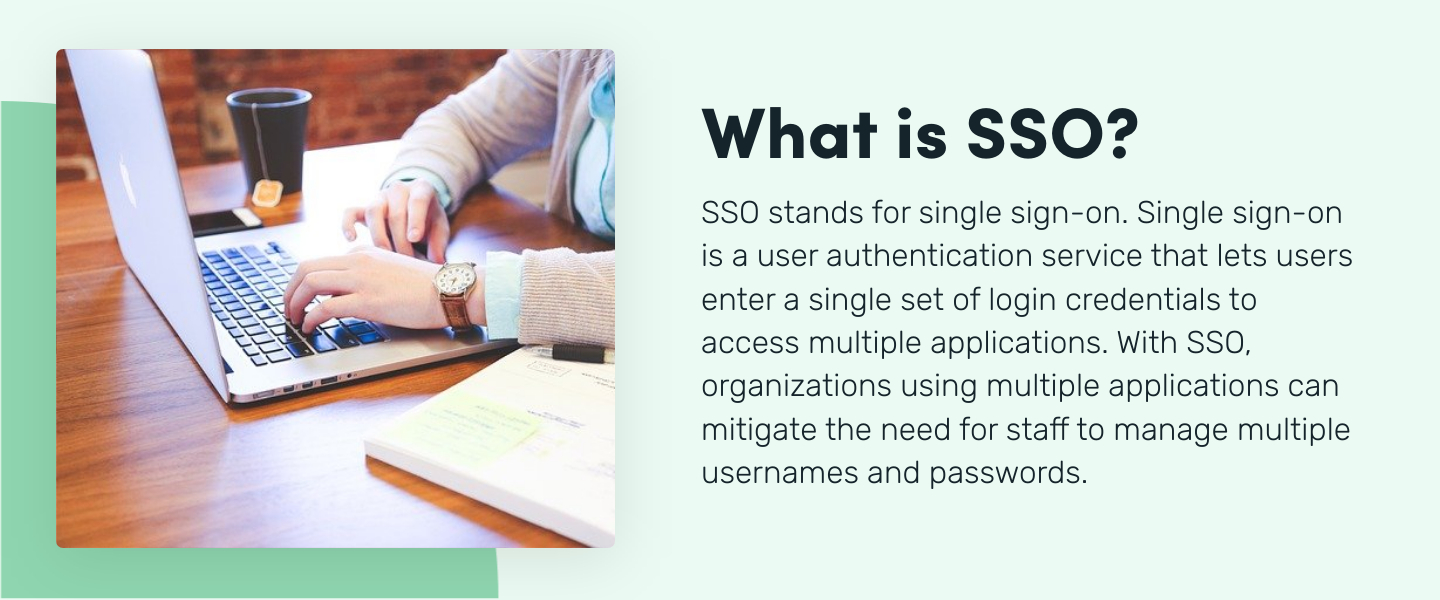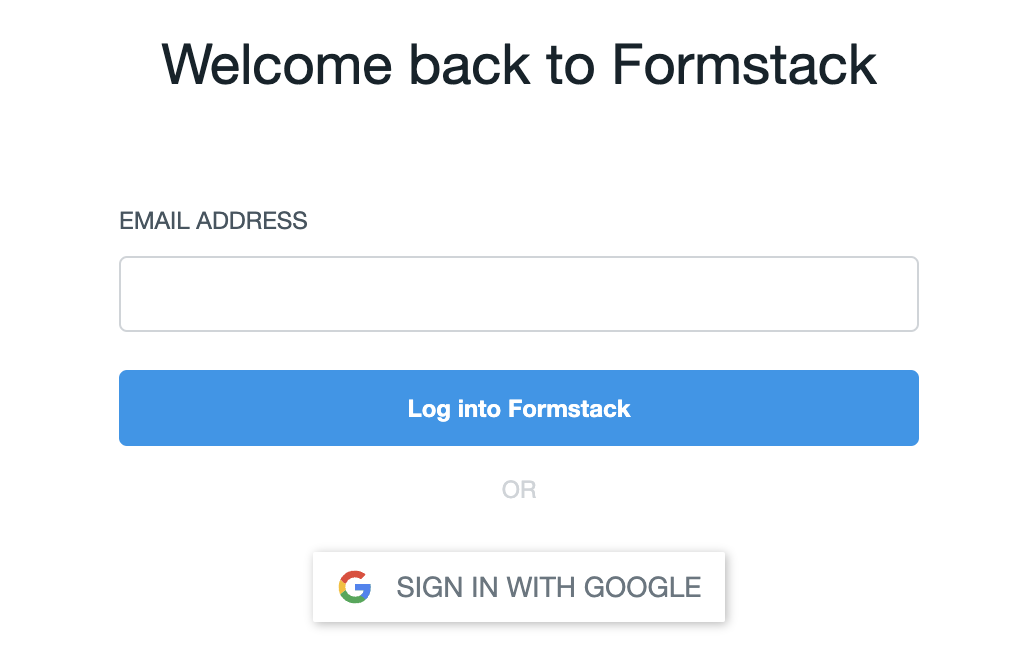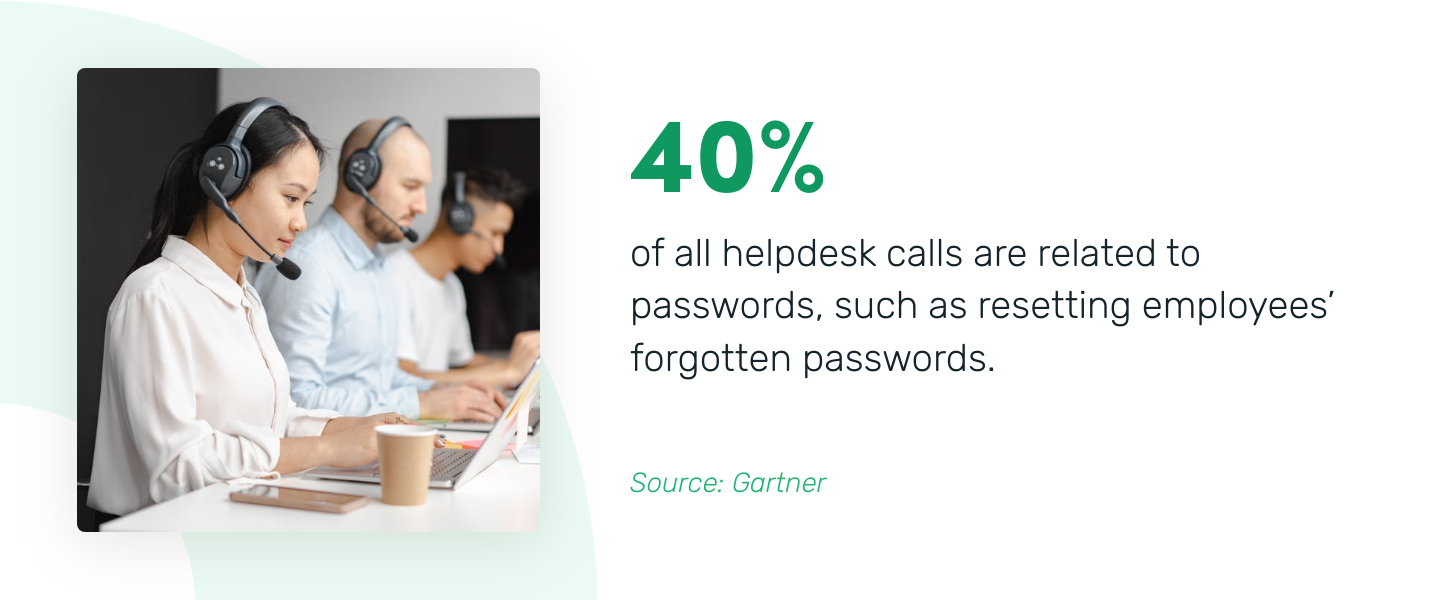How many apps do you think an average company has within their tech stack?
If you guessed around 100, you’re in the ballpark. Data from Statistica reports that the average number of software as a service (SaaS) applications used by organizations worldwide in 2021 is about 110.
When you drill down into just enterprise-level organizations, that number of tools skyrockets. According to McAfee research, the average enterprise uses 464 applications. Of these applications, 56.8% are used only by internal employees. This means employees are handling huge amounts of data and possibly hundreds of passwords.
Juggling this many tools at once can put a strain on employees. Managing hundreds of passwords, jumping in and out of tools, and copying and pasting data over and over can negatively impact employee satisfaction and productivity. There’s also the issues of security, compliance, and IT resources.
Yet there is a tool that can help address all of these issues and concerns: single sign-on, also known as SSO. Read on to learn more about what SSO is and how it can help your organization better secure apps, minimize strain on IT, and improve productivity.
What is SSO and how does it work?
SSO stands for single sign-on. Single sign-on is a user authentication service that lets users enter a single set of login credentials to access multiple applications. With SSO, organizations using multiple applications can mitigate the need for staff to manage multiple usernames and passwords.

To use SSO, an app must be connected to an external authentication provider. This is a tool that authenticates a user’s account information and identity. The two common types of authentication include password authentication providers and redirect authentication providers.
Password authentication providers collect a username and password through the normal application login page and then connects with an external authentication source to verify the login information. In this case, users store one password to use across applications. Providers that fall into this category include LDAP and Active Directory.
Redirect authentication providers offer a link or button on an app’s login page that will redirect the user to a third-party website to login. This third-party site authenticates the user’s information and then automatically logs the user into the original application. Providers that fall into this category include SAML and CAS.
For example, SSO is an advanced feature that can be added to Formstack accounts. Once connected to SAML, account owners can select the third-party app they prefer to use for authentication. Google is a common app selected as the verification method.

What are the benefits of SSO?
Think SSO is just a password tool that helps improve security? That’s just the beginning of how SSO can benefit your organization.
Enhance Security
Keeping track of hundreds of passwords can be difficult; ensuring all those passwords are secure and follow best practices can be nearly impossible. Plus, trying to maintain hundreds of passwords through a password management system requires valuable employee time, maintenance, and investment.
SSO can assist by providing employees a single login system across all applications they need to access. This can help your organization minimize data breach risks by reducing the need to create, track, and maintain passwords for multiple apps. SSO protects your data by minimizing:
- Weak passwords
- Account lockouts
- Continual password updating
- Password vaults
- Physical notation of passwords
- Keystroke tracking opportunities
- Password reuse
Implementing SSO also provides your IT teams the ability to enforce a single password policy for all of your systems. This ensures the one password employees must use to log in is secure and up to your organization’s standards and requirements. If you work in an industry that requires high-level security, such a government or healthcare, multi-factor authentication (MFA) can be easily paired with SSO for an added layer of protection.
Support IT
Many enterprise companies rely on their IT helpdesk to sort out password problems for employees. This way of operating is meant to ensure security, but it can cause some pretty significant issues.

To start with, Gartner estimates that 40% of all helpdesk calls are related to passwords, such as resetting employees’ forgotten passwords. An even more astounding statistic is that Forrester Research determined large organizations spend up to $1 million per year on staffing and infrastructure to handle password resets alone.
Those are staggering numbers. Imagine what the IT team could accomplish if these password-related requests were removed from their day-to-day operations. Well, you don’t need to imagine if you add SSO to your operations.
When SSO is enabled, IT is relieved of the need to become involved with most password-related issues, like password resets and account lockouts. This frees up their time and unclogs their inbox and other lines of communication. Employees outside of IT can become more self-sufficient and less involved with setting–and forgetting–passwords. It’s a win-win situation for all.

Improve Productivity
We all know focus is hard to come by in the modern age. Now more than ever, employees are bombarded by so many tasks, apps, and channels; it’s hard to really get into a groove and create focus time. In fact, U.S. employees switch between 13 applications 30 times per day on average.
Now, consider how much time is made up chasing down passwords across those 13 applications. If you’re an enterprise organization, the number of tools may triple or even quadruple. That time adds up–according to research, employees lose about an hour a day looking for information across tools and apps. If you’re jumping across tabs or windows, you also have to consider being timed out by apps and needing to re-login.
Consider how easy it would be if you could log into any app in your tech stack with just one click. With SSO, that’s exactly what happens. If employees must use multiple tools within their workday, transitioning between those tools should be made as seamless as possible. With SSO, employees no longer have to waste time looking up passwords or trying to remember which password is current. This allows them to stay more focused, motivated, and engaged as they move from tool to tool.

Did you know? Formstack offers a powerful SSO Feature that can pre-populate an end user’s form using data stored within your SSO provider. Watch this webinar to learn more about this productivity-boosting feature.
Create Better Experiences
Creating seamless, streamlined experiences is key to keeping employees and customers happy. The less friction involved within any process the better. SSO can eliminate many of the tedious and frustrating issues related to signing into apps and managing passwords.
But the benefits of SSO only start with the ease of one single password. SSO is a powerful tool that can also do the following:
Prefill forms with data stored in your systems. Some tools, like Formstack, can use SSO to prefill form fields with data you have previously captured from employees or customers.
Make new tool adoption easy. Whether using an app internally or externally, adding SSO as a sign-in option can drastically increase tool adoption thanks to the simplicity and ease of sign-up and logging in.
Increase trust of customers. When SSO logins are done through common, well-known tools like Google, Twitter, or Facebook, customers may be more likely to trust this process of signing in and sharing data.
Minimize interruptions. Avoid needing to hassle customers or employees to update or re-enter their password. Offer seamless interactions with a one-click login and minimal interruptions.
Start using SSO today.
SSO can be an incredible asset to any organization, big or small. If you want to enhance security, improve experiences, and increase productivity, look into adding SSO to your organization’s tools today.
Take the power of SSO to the next level with Formstack’s Field Prefill powered by Single Sign-On. Using the power of SSO and the data you already have, Field Prefill allows you to send out prepopulated forms that make form completion a snap.












